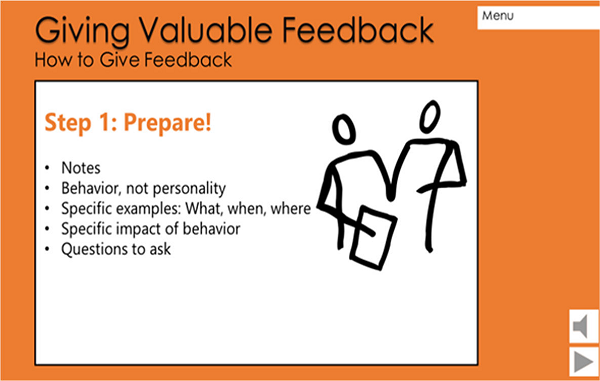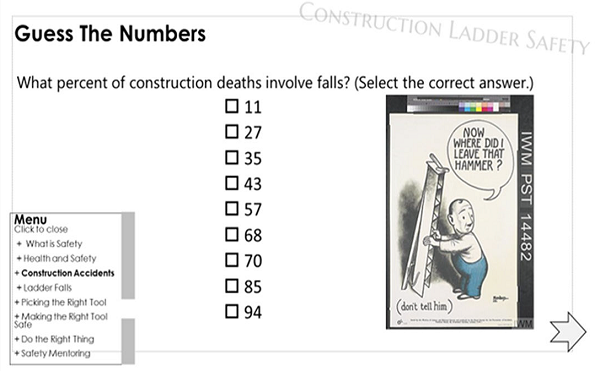ATD Blog
Eliminate Needless Mental Effort
Wed Sep 12 2018

Designing for memory requires removing unnecessary demands on working memory. Doing this frees limited working memory for processing information and building schemas. The following typical-but-unfortunate issues cause needless mental effort and decrease the amount of mental effort available to learn:
unnecessary content
content that causes split attention
content that moves fast and doesn’t allow for needed processing
inappropriate control of the learning environment.
Remove Unnecessary Content
Below are common content problems that cause harmful cognitive load and interfere with learning during instruction:
decorative pictures
background music
bells and whistles
extra content.
Decorative pictures are pictures that do not offer valuable information, but use memory resources nonetheless. The figure below is an example of a decorative picture on a content page. This picture doesn’t offer valuable information but uses mental effort.

Decorative pictures and background music distract focus away from critical content. Bells and whistles (sound effects, moving text, dancing pigs, and so forth) also divert attention from what is important. Unnecessary content distracts attention and focus and makes these critical learning tasks harder:
making sense of new information
processing content
recognizing what is important
building schemas.
Extra content added “just in case” uses extra effort to process—or, at least, to figure out if it is useful or needed. People using instruction should not suffer because we didn’t tie instruction to specific job needs. The image below shows a screen from a ladder safety course for construction workers with nonvaluable content. What content do you see that shouldn’t be there?

In my opinion, most of this content is off-target. The course isn’t about general construction accidents. It’s about preventing accidents with ladders—so the content on the slide does not apply to the learning objectives. Should people have to remember the exact percentage of construction accidents that result in death? Putting in a silly cartoon takes attention away from a serious issue and sends the wrong message.
Try It
Review the high-level storyboard in the table below for an employment discrimination lesson for new supervisors. Which elements do you think are unnecessary? The bolded content is likely unnecessary.
Lesson: Employment Discrimination/Title I
Topic | Activities | Media |
What is employment discrimination/Title I | Audio: Employee describing her case | |
Types of employment discrimination | Match case to discrimination type | Pictures of angry employees
Images of court documents |
Legal consequences and remedies of employment discrimination | Select the court cases that resulted in a finding of employment discrimination | Pictures of people in the courtroom
Images of court documents |
Employment discrimination policies | Scenarios: What policy applies Application exercises | Typical policies Video: Applying the policy |
Resources
Title I
Links to relevant cases | ||
Want to learn more? Check out my new book |
